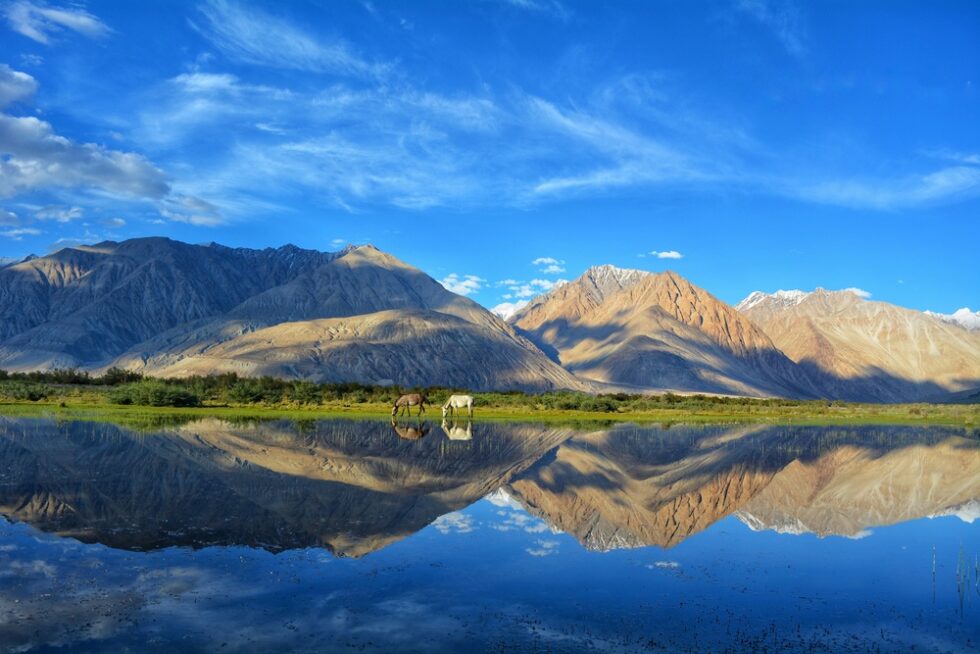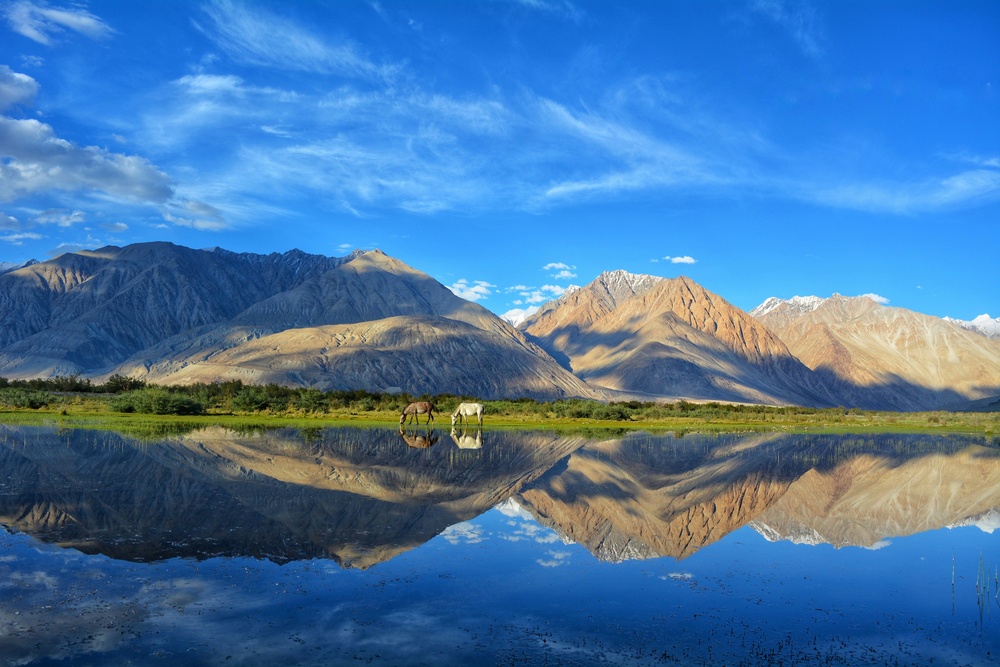
Ladakh, often called the Land of High Passes, is one of the most captivating and unique tourist destinations in India. Located in the northernmost part of the country, this high-altitude desert is famed for its stark landscapes, ancient Buddhist monasteries, vibrant culture, and thrilling adventure opportunities. Whether you’re a nature enthusiast, spiritual seeker, or adventure lover, Ladakh tourism offers an unforgettable journey into the heart of the Himalayas.
The Breathtaking Landscape of Ladakh
What sets Ladakh apart is its surreal landscape—a vast expanse of rugged mountains, deep valleys, and crystal-clear rivers. The region is perched at an altitude ranging from 9,000 to 25,000 feet, offering panoramic views of snow-capped peaks like Nubra Valley, Changthang Plateau, and the mighty Kang Yatse.
The unique cold desert climate means Ladakh experiences long, harsh winters and pleasant summers, making the months from May to September the best time for tourism.
Spiritual Heritage and Monasteries
Ladakh’s spiritual richness is reflected in its ancient Buddhist monasteries, which serve as cultural hubs and centers of learning. Some of the most famous monasteries include:
- Hemis Monastery: The largest and wealthiest monastery in Ladakh, known for its annual Hemis festival featuring traditional masked dances.
- Thiksey Monastery: Often called the ‘Little Potala Palace,’ this monastery offers stunning views of the Indus Valley.
- Diskit Monastery: Located in Nubra Valley, it houses a towering statue of Maitreya Buddha overlooking the valley.
- Alchi Monastery: Renowned for its ancient wall paintings and wood carvings, it reflects a blend of Indian and Tibetan art.
Visiting these monasteries provides insight into Ladakh’s spiritual traditions and offers moments of tranquility amid breathtaking surroundings.
Adventure Activities in Ladakh
Ladakh is a paradise for adventure enthusiasts. The rugged terrain invites trekking, mountain biking, river rafting, and camping under star-studded skies.
- Trekking: Famous treks like the Chadar Trek (over the frozen Zanskar River), Markha Valley Trek, and Stok Kangri Trek challenge trekkers with stunning landscapes and cultural encounters.
- River Rafting: The Zanskar and Indus rivers offer thrilling white-water rafting experiences amidst towering cliffs and pristine wilderness.
- Mountain Biking: Exploring Ladakh’s high passes on a bike, including the famous Khardung La Pass, is an adrenaline-pumping adventure.
Nubra Valley – The Oasis in the Desert
Nubra Valley, accessible via the world’s highest motorable pass, Khardung La, is a must-visit in any Ladakh itinerary. This cold desert region features sand dunes, double-humped Bactrian camels, and charming villages like Diskit and Sumur.
The valley’s unique mix of Buddhist and Muslim culture, along with its stunning natural beauty, offers travelers a diverse experience of Ladakh’s heritage.
Pangong Lake – The Shimmering Blue Wonder
No trip to Ladakh is complete without witnessing the ethereal beauty of Pangong Lake. Stretching over 134 km, this high-altitude lake is famous for its shifting blue hues that captivate photographers and nature lovers alike.
The lake is partially in India and partially in Tibet, and visitors can camp by its shores, soaking in the serene atmosphere and starry nights.
Local Culture and Festivals
Ladakh’s culture is a vibrant blend of Tibetan Buddhism and indigenous traditions. The local people, known as Ladakhis, are warm and hospitable, preserving their unique customs through festivals and daily rituals.
The Losar Festival, marking the Tibetan New Year, is celebrated with traditional music, dance, and elaborate feasts. The Hemis Festival, held at Hemis Monastery, features colorful masked dances and prayers that draw tourists from around the world.
Exploring local markets, you’ll find exquisite handicrafts like Pashmina shawls, thangkas (Buddhist paintings), and traditional jewelry that reflect the region’s artistic heritage.
Sustainable Tourism and Eco-Conscious Travel
With its fragile ecosystem, Ladakh promotes sustainable tourism to preserve its pristine environment and cultural heritage. Travelers are encouraged to respect local customs, minimize waste, and support eco-friendly accommodations and initiatives.
Many homestays and community-run guesthouses offer authentic experiences while contributing to the local economy.
How to Reach Ladakh
Ladakh can be accessed via two main routes:
- By Air: The easiest way is to fly into Leh Airport, which is well connected to major cities like Delhi, Srinagar, and Chandigarh.
- By Road: The adventurous road journey through the Manali-Leh Highway or the Srinagar-Leh Highway offers spectacular views but requires acclimatization due to high altitudes.
Conclusion
Ladakh tourism is a mesmerizing journey into a land of extremes—where harsh deserts meet snow-capped mountains, ancient monasteries stand against dramatic backdrops, and vibrant cultures thrive amidst solitude. Whether you seek adventure, spirituality, or a chance to connect with nature, Ladakh promises an experience that stays etched in your heart forever.









